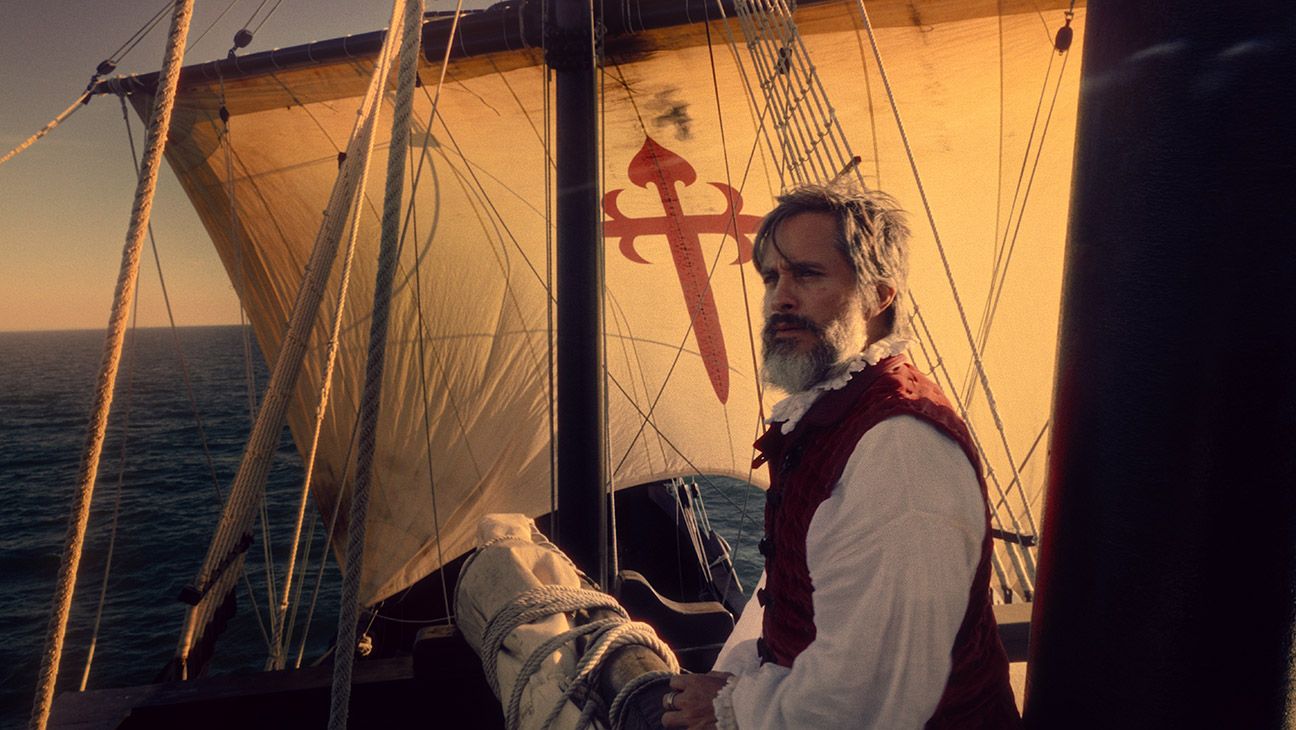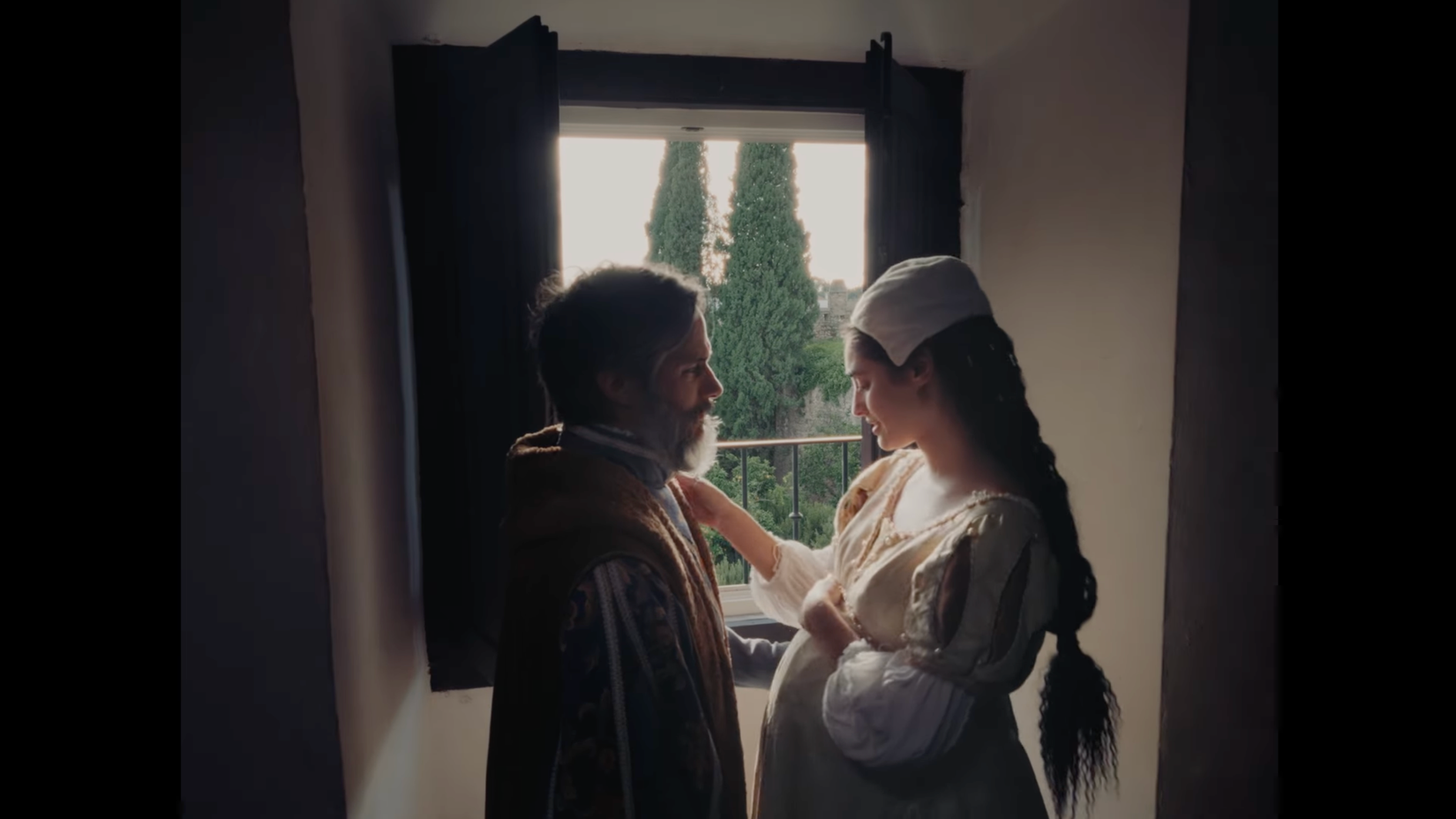
Ferdinand Magellan is often celebrated in Western culture as a legendary explorer. However, for director Lav Diaz, and many people in the Philippines and the Global South, Magellan represents a history of colonialism and violence. His latest film challenges the traditional heroic portrayal of Magellan by instead focusing on the story of Lapulapu, the chieftain who led the defense of Mactan Island and defeated Magellan and his troops.
Lapulapu is a legendary hero in the Philippines, often depicted in art, movies, and as a massive 66-foot statue. However, the film portrays him differently – not as a real person, but as a made-up figure created by Rajah Humabon, a local chief. Humabon supposedly invented the story of Lapulapu to provoke Ferdinand Magellan into a fight.
Diaz questions whether Lapulapu was a real historical figure, as he shared after a screening at AFI Fest. However, the film itself reimagines the story, suggesting that narratives of resistance and bravery can challenge dominant, Western perspectives. It implies that the biggest weakness of a colonial power might be its own arrogance.
Magellan Is Diaz’s Most Subversive Work Yet

At 160 minutes long, Magellan is relatively short for pioneering slow cinema director Lav Diaz, leading some to believe it’s one of his more approachable films. However, shot with a Panasonic J7 camera in a square 4:3 format, the film often feels more like a museum piece, prioritizing visuals over a traditional storyline. The camera work gives Magellan a consistently dreamlike quality, echoing both the early days of cinema and modern artistic styles. Each frame, carefully composed by cinematographer Artur Tort (a frequent collaborator with Albert Serra), is rich with detail, reminiscent of the detailed Dutch landscape paintings of the period.
This decision adds another layer to Diaz’s critique of colonialism, using the power and consistency of nature as a key element. Similar to experimental filmmaker James Benning, Diaz films with a static camera, acting as a detached observer of creation, destruction, and renewal. Magellan primarily covers the period between 1511, when Magellan took Malacca, and his death in 1521, detailing the flawed hero’s violent journey, often marked by a refusal to respect the natural world and its limits.
Even though the film presents Lapulapu as a legendary figure, the director isn’t overly focused on historical accuracy, but rather on how history lives on in the Filipino collective memory. The filmmakers paid close attention to details like costumes, props, and sets – even rebuilding the ship Victoria – but battles and death scenes appear frequently without much explanation. The film is direct and suggests that history is remembered in broad, impactful images: this is the man, and this is the legacy of conflict he left behind.
Okay, let me tell you about Magellan. Visually, it’s absolutely stunning. The cinematography by Tort isn’t just pretty pictures; it tells Magellan’s story as powerfully as the script itself. Director Diaz paints Magellan as a spoiled, ambitious brat – a man who’ll ditch his morals, especially his supposed Christian ones, without a second thought. There’s this one shot – Magellan staring up at this huge castle on the beach – and it perfectly captures how small he is, yet how ridiculously big his desires are. But Diaz doesn’t shy away from critiquing the impact on the indigenous people either. The final image, of the tribe dancing around a fire with severed heads, is genuinely shocking and speaks volumes about the cost of Magellan’s ambition.
Diaz also works to show us Magellan as a human being, largely through his deep love for Beatriz (Ângela Ramos). She appears in the film mostly as dreamlike visions, shown with a soft, glowing filter. Separated from his home and the woman he loves, Magellan experiences vivid dreams of Beatriz giving birth, their child dying, and even Beatriz’s own death – all interwoven in delicate and haunting images.
Lav Diaz’s earlier films tend to be lengthy, low-budget, and primarily shot in black and white. While his new film, Magellan, is also long, it feels surprisingly accessible in comparison. It’s clearly a more expensive production and focuses on a famous historical figure, functioning almost as a biography. However, Diaz consistently works in a way that challenges expectations, often presenting something different than what initially appears. The historical details he does include – dates, places – aren’t central to the film, but rather serve to highlight the lasting, hollow consequences of colonialism.
The filmmaker’s message is most powerfully conveyed through the character of Enrique (played by Amado Arjay Babon), Magellan’s Cebuano slave. The film begins with Enrique being purchased and ends with a haunting shot of his unmoving eyes. His scarred hands symbolize that freedom often comes through struggle and violence – a stark observation from the director, relevant to the divisions we see today. The film suggests that certain harsh truths are unavoidable.
Magellan screened at the 2025 AFI Fest.
Read More
- The Most Jaw-Dropping Pop Culture Moments of 2025 Revealed
- Ashes of Creation Rogue Guide for Beginners
- Where Winds Meet: How To Defeat Shadow Puppeteer (Boss Guide)
- Best Controller Settings for ARC Raiders
- Where Winds Meet: Best Weapon Combinations
- TikToker Madeleine White Marries Andrew Fedyk: See Her Wedding Dress
- Jim Ward, Voice of Ratchet & Clank’s Captain Qwark, Has Passed Away
- Kylie Jenner Makes Acting Debut in Charli XCX’s The Moment Trailer
- Hazbin Hotel season 3 release date speculation and latest news
- 5 Things We Want to See in Avengers: Doomsday’s First Trailer
2025-10-27 20:58